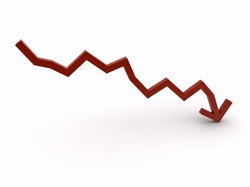Many businesses are too slow to acknowledge the presence of and respond to a crisis in their midst timeously. Knowing how to spot one, and how to deal with a crisis scenario effectively should one arise is essential to the survival of a business. The nature of a crisis implies it's surprising and unpredictable in nature, so being prepared is difficult.

How to Identify Corporate Crises
by edstorm
How to spot a corporate crisis, and how deal with one when it arises.
Defining a Crisis
Corporate crises can take many different forms, but what’s common to all of them is that if they’re not properly managed, they can pose a real risk to a company’s survival. Your company, its stakeholders and employees, and potentially even the public may all be at risk.
For a situation to be defined as a crisis, it has to meet three conditions. It must be a threat to the organization, it must bear an element of surprise, and it requires that decisions be made in a short space of time. These three factors often combine to create a fourth, essential quality of a corporate crisis, and that is the need for change. The existing model for the organization didn’t prevent the crisis from occurring, indicating that it may have to be updated. However, some crises can’t be prevented. For example, they may occur due to natural disasters, malicious activity or other unforeseeable circumstances.
Damage Control
Natural disasters often can’t be predicted or anticipated, and so are difficult to prepare for. In relation to this type of disaster, crisis management occurs mostly during and after the disaster, be it an earthquake, flood, volcanic eruption or any other destructive natural force.
Other crises are preventable. For example, an organization may face a crisis if it misrepresents or conceals information about itself and its products or services from its consumers or employees. Managers may behave illegally – committing fraud, for example – resulting in damage to the organization Management misconduct such as this can be taken to a further extreme, where deliberate illegality takes place, hurting the company itself and potentially others in its wake.
Malice from other companies is another potential source of crisis, with corporate “mud-slinging” designed to hurt a company where it matters – its customer base. For example, consider the Proctor & Gamble, or P&G, logo controversy of the early 1980s. The corporation’s original logo, created in 1851, was a simple cross that barge workers would paint on containers of P&G candles to identify them. P&G later changed the symbol into an image of the man in the moon overlooking 13 stars, apparently to commemorate the 13 colonies of the United States.
 Proctor & Gamble Logo in 1851 |
Rumors began circling that this logo was in fact a satanic symbol. The accusation was due to a passage in the bible: "And there appeared a great wonder in heaven; a woman clothed with the sun, and the moon under her feet, and upon her head a crown of 12 stars." The logo, clearly containing 13 stars, was said to be a mockery of this verse. The rumors went deeper still, surmising that where the beard met the circle beneath the chin, the three curls were inverted sixes, spelling out 666, and that where the hair curls against the upper rim of the circle, they look like the horns of a ram, another satanic symbol. P&G successfully sued the propagators of the claims, and have since changed its logo to something less “devilish”.
Operating in a Crisis
A company’s main concern during a time of crisis should be to contain and manage the crisis, while continuing with its usual business operations as far as possible. A sound and professional crisis management team will perform continuity planning – including determining the financial, technological and human resources needed to keep the company running, and the steps required to minimize the impact of the crisis situation.
During a crisis, effective leaders build an environment of trust, address the vulnerabilities that allowed the crisis to occur, make decisions swiftly and learn lessons they can apply to effect positive changes.
You might also like
Top Paid Business ExecutivesThe average top executive pay in the U.S. was $12.3 million in 2012. Are shar...
Why having the right culture is important in a workplaceHow to achieve a workplace culture where every employee is happy and giving t...




 Herbal Medicine in South Africaon 08/20/2014
Herbal Medicine in South Africaon 08/20/2014
 Citroën, Europe’s First Mass Producer of Carson 07/04/2014
Citroën, Europe’s First Mass Producer of Carson 07/04/2014
 Use Smartphone Technology for Evidence Collectionon 07/03/2014
Use Smartphone Technology for Evidence Collectionon 07/03/2014
 Smart, Sneaky Solutions for Hiding Valuableson 06/13/2014
Smart, Sneaky Solutions for Hiding Valuableson 06/13/2014


Comments